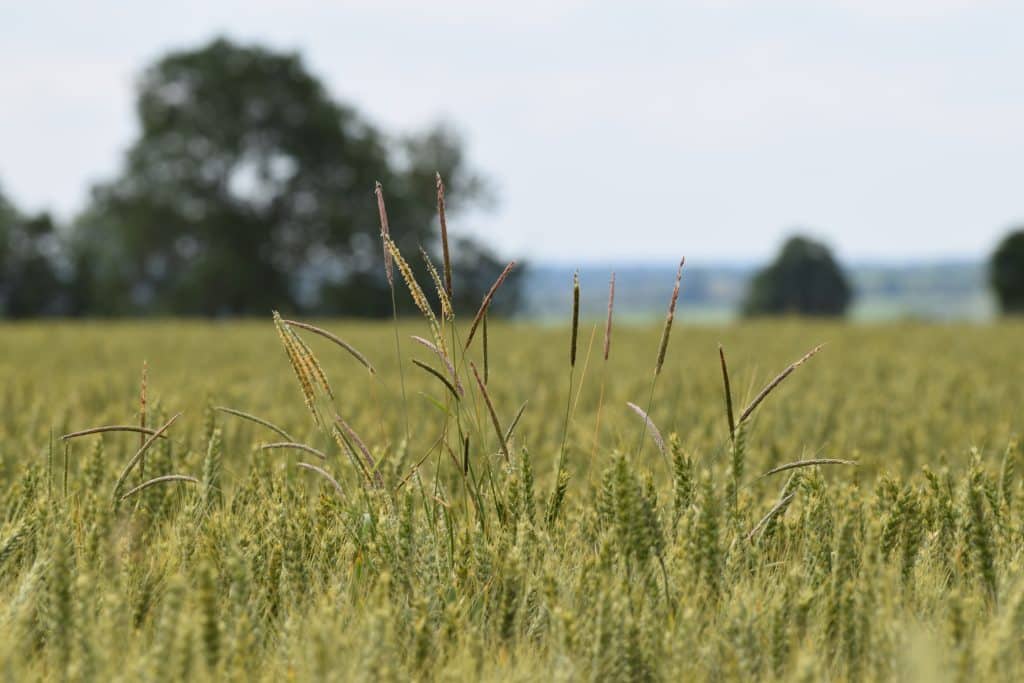Later emergence opens new front in blackgrass battle – Midland Farmer
The later and more protracted emergence of blackgrass is prompting a shift in control strategies ...
Continued use of successful management strategies for blackgrass control developed by agronomy company Hutchinsons is starting to lead to a shift in population dynamics, says technical manager Dick Neale.
“Growers have been using the tactics we proposed at our Brampton site of stale seedbeds through September, shallow tillage, sprayed off with glyphosate, delaying drilling until at least 15 October for the past 10 years.
“We are now dealing with a blackgrass population that is 10-fold fewer, so maybe only 40-50 plants compared with 400-500 plants per square meter – but one where those 40-50 plants are emerging between the beginning of October and Christmas.”
In the field
To test that theory, Hutchinsons sprayed small plots of its new blackgrass demonstration site in Cambridgeshire every couple of weeks last autumn, allowing it to map emergence throughout the autumn.
“We were getting around 15 blackgrass plants per square metre emerging through late November and into December.”
The changing pattern has implications for both cultural controls and residual herbicide strategies, with stale seedbeds potentially becoming less effective and necessitating the use of sequences rather than large single stacks of pre-emergence herbicides.
“We have selected for a population that is emerging in October more than in September – so when you are using stale seedbeds make an effort to observe what is happening.
“If it has rained in September and you know blackgrass should be emerging and it’s not – make a note of that, as it is telling you something.”
Will Smith, technical lead for Gowan, agrees that later-emerging blackgrass is increasing in importance. But he believes this is a result of an improvement in overall control rather than a change in the blackgrass population.
“The germination peak in late September is becoming less pronounced as overall populations have been eroded” says Dr Smith.
“This makes any late emerging plants more apparent in relative terms, but it shouldn’t distract from the vital role of controlling the largest part of the population.”
Blackgrass control has been above average this year, helped by delayed drilling caused by torrential rain in mid-September and then excellent conditions for residual herbicides to work when drilling could proceed in late October and November.
This means the lower effectiveness of stale seedbeds might be less of a problem than in other years. That doesn’t mean not to continue using the technique or glyphosate pre-drilling, but it could mean that adding glyphosate to pre-emergence sprays is the more effective timing.
Protected emergence
With more protracted blackgrass emergence, Mr Neale suggests residual herbicide sequences are becoming even more important.
“We’ve seen it in our trials for the past five seasons – sequences are outperforming single applications significantly,” he says.
Herbicidal activity from single pre-emergence applications will have degraded and diminished, so any blackgrass emerging more than 30 days after application will be at risk of not being controlled adequately, Mr Neale explains.
Sequencing doesn’t have to mean spending much, if any, more on herbicides, though, he stresses.
“We showed clearly in our trials this year that you can take the same amount of money and by splitting it, you’ll get a much better result than trying to second-guess the exact timing for one application.”
Some products must be used at pre-emergence for crop safety or label approval reasons, while others are more effective and should be prioritised for use at that timing.
“Cinmethylin, for example, is very much a seed and root uptake product, so it needs to pre-emergence of blackgrass to get the best from it.”
Protected emergence
Avadex Factor (tri-allate) and aclonifen must be used pre-emergence of the crop.
In contrast, metribuzin, in combination with flufenacet and diflufenican, and Isoflex (bixlozone) products have a particular strength in controlling blackgrass that is just emerging.
These products are therefore believed to be potentially better suited to a peri-emergence or early post-emergence second application.
Drilling date and weather should also influence decision-making regarding sequencing, with dry conditions potentially indicating the need to split the pre-emergence spray into two applications.
Earlier drilled crops
“While for 15 October drilling dates I might apply Avadex (Factor) and cinmethylin together at pre-emergence, for those earlier drilled crops in drier conditions I might sit on the cinmethylin for maybe another 10 days after drilling to wait for wetter and/or cooler weather.”
Weather conditions and farm setup play an important role in determining whether to use the granular Avadex Excel or liquid Avadex Factor formulations of tri-allate, rather than just focusing on which one delivers the most active ingredient, according to Dr Smith.
“Both formulations have different strengths,” he says.
Overall, in trials, Avadex Excel has the edge over the Avadex Factor formulation, says Dr Smith. “But the average hides a lot of detail; in some trials, one has the advantage, in others it’s the other.”
For example, in autumn 2023, Avadex Factor performed on par with or better than its competitors in virtually every single trial, primarily due to drilling conditions.
Labour availability
On some farms, Avadex Factor might be the best option, particularly where sprayer capacity and labour availability allow for pre-emergence herbicides within 48 hours of drilling.
Where farmers have access to an Avadex Excel applicator or a reliable local contractor, applications of Avadex Excel may make most sense.
Whichever formulation is used, Avadex has been a consistent base to residual herbicide programmes.
“Every year, we see a 15-20% uplift in blackgrass control where Avadex is used as part of the programme compared with where it isn’t.
“It’s very consistent regardless of the overall control level of the programme, including where newer chemistry such as cinmethylin is used,” says Dr Smith.
